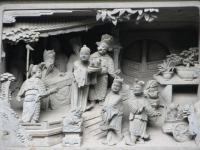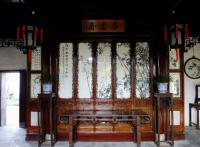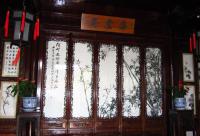Garden of Net Master (Wangshiyuan)
Garden of Net Master is the smallest among the four most famous classic gardens in Suzhou, yet it is the most impressive, thanks to the architect who used its limited space smartly to create the illusion of a much larger area. Even more than the architectural achievement is the sense of tranquility and harmony that this humble garden embodies.
This exquisite garden was first built during the Song Dynasty (960 - 1279) as part of a residence, which was in use until the Taiping Rebellion took place in the 1860's. It later became the residence of a government official and was given its present name. It is said that by giving his garden such a name, he indicated that he would rather be a fisherman than a bureaucrat.
The garden is divided into three sections: the residential quarters, the central garden and the inner garden. Surrounding the big pond in the main garden, there are structures such as the Ribbon Washing Pavilion and the Pavilion of Moon and Wind Advent. As is commonly seen in Suzhou gardens, there is a small pavilion standing in the center of the pond, a bridge of less than one-foot wide linking it to the shore.
When you walk in the garden's corridors, through the windows, you often catch views of beautiful flowers or plants in distance. As a private mansion, the garden is obviously designed for the convenience of the family members and their guests. From any of its buildings, you can always find easy access to the main garden. The rooms, furnished in the Song-dynasty style, are quite impressive too.
The exquisite inner garden, recognized as the best preserved garden in Suzhou, has been copied as the Ming Hall Garden of the Metropolitan Museum of Art in New York and miniaturized for an exhibit in the Pompidou Center in Paris in 1982.


More Attractions in Suzhou



